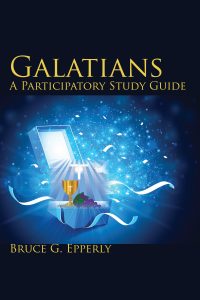Examples of Textual Issues in Translation
One issue that is commonly neglected in comparing Bible translations is the text used. Translators are well aware that differences in translation can be the result of differences in the text used, but in modern times, the approach to the text used by most translations has been very similar, and thus tends to be ignored by non-professionals. One major distinction is between those translations that follow the Textus Receptus, and those that use a more modern, eclectic text in the New Testament. The NKJV is a good example of a modern translation that follows that text.
But in discussing the RSV, ESV, and NRSV, I was reminded of another textual difference that is less well known: The attitude of the translators toward conjectural readings and readings in supported only by an ancient version or one of the Dead Sea Scrolls. Typically, in translating the Hebrew scriptures, Christian translators have followed the Masoretic Text, the text printed in the vast majority of Hebrew Bibles, unless they find it impossible to translate the MT intelligibly. In that case they will look to the versions, the scrolls, or even to a conjectural emendation in some translations. The tendency in New Testament textual criticism, because a large amount of external evidence is available, is to study each variant and determine the best text, but this procedure has not yet carried over into Old Testament studies.
(More conservative translations tend to produce more of a “conjectural translation” as opposed to a conjectural emendation. By “conjectural translation” I mean a translation that is simply one’s best guess at what a text may mean. In many cases, I find these translations no less questionable than a conjectural emendation. I will try to write a blog entry sometime soon on some examples of difficult texts in the Hebrew scriptures and how they are handled by various versions.)
So a significant difference between translations may be their handling of the text, in particular the text of the Hebrew scriptures. I’m going to look at two examples, from two different translations. In each case, the particular text accepted is accepted only by the version cited amongst modern versions.
The first is an added paragraph between 1 Samuel 10:27 and 11:1. In this case we have an explanatory paragraph that comes between Saul becoming king and the situation in Jabesh Gilead which is Saul’s first problem as the leader of Israel. The NRSV alone among the modern translations includes this paragraph as part of the text. It is noted in a footnote in both the NLT and the CEV.
The paragraph reads:
Now Nahash, king of the Ammonites, had been grievously oppressing the Gadites and the Reubenites. He would gouge out the right eye of each of them and would not grant Israel a deliverer. No one was left of the Israelites across the Jordan whose right eye Nahash, king of the Ammonites, had not gouged out. But there were seven thousand men who had escaped from the Ammonites and had entered Jabesh-gilead. (NRSV)
In favor of adding this paragraph to our current text are the following:
- It is contained in 4QSama
- It could easily have been left out by haplography, with the scribe’s eye scanning from the first Nahash here to the second at the beginning of 11:1
- Its use by Josephus indicates that it was likely in the Greek text he was using
- Compared to 4QSama the MT is very short. Using both the LXX and this evidence, it is likely that there has been a considerable amount of haplography in the MT.
Against adding this paragraph are the following:
- The external evidence for this reading is extremely weak
- The explanatory paragraph could well have been a marginal comment that was later incorporated into the text.
- The MT is generally the more carefully copied text type. (But note that it was probably not under that type of control when 4QSama was created.
The NRSV shows its tendency here to be nearer the leading edge of modern scholarship than are other versions. I think in this case they made the correct choice, though I’m sympathetic to the considerations that probably led the NLT and CEV teams to place this additional text as a footnote.
A second case involves the text of Isaiah in the Revised English Bible (REB) and the New American Bible (NAB). Isaiah 41:6-7 are transposed in that version to follow Isaiah 40:20. This is a correction supported by no external textual evidence at all. Presumably the change is based on a copying error involving miscopying part of a column, but the mechanism by which the change could occur is a bit obscure. It would have had to occur very early in the text.
In favor of this change:
- The apparent logical structure of both chapters is corrected
- The presumption that an early error might have been made in copying columns
Against the change:
- Complete absence of external evidence to support it
- Though the chapter logic is made smoother, it is a common style in Isaiah 40 and following chapters to intrude diatribes against idols into the flow. Following the author’s style, then, would seem to suggest that the passage would be acceptable in its current location.
- The process of copying that would result in the present text when starting with the presumed text is somewhat obscure.
Here, though I like the REB generally, I think that the translators’ choice was not the best one.





I disagree with your conclusions on the 1 Samuel passage. Besides the reasons given, I note that what in MT is only a stylised threat to gouge out eyes (11:2), as part of a treaty offer which obviously was not expected to be accepted, has become an actual and barbaric practice. This looks very much like an attempt by some editor to blacken the character of an enemy of Israel. I note also that a very good reason for 4QSama to be longer than the MT is that the extra passages are very likely “creative additions to, and expansions of, an original shorter text as attested by MT” (words from a 1988 review summarising the view of Pisano in his book Additions or Omissions in the Books of Samuel).
Peter Kirk says:
It’s certainly a fertile area for disagreement. 🙂 I tend to be less inclined to accept the maxim that the shorter text is to be preferred, and thus I am more inclined to accept longer readings in many cases (should we discuss the western text of Acts?). On the other hand, I think that your argument against the addition of this paragraph is certainly on point, and I’m glad you added it to the discussion. I think it further illustrates the willingness of the NRSV translators to go further out on a limb than others using doubtful textual options.